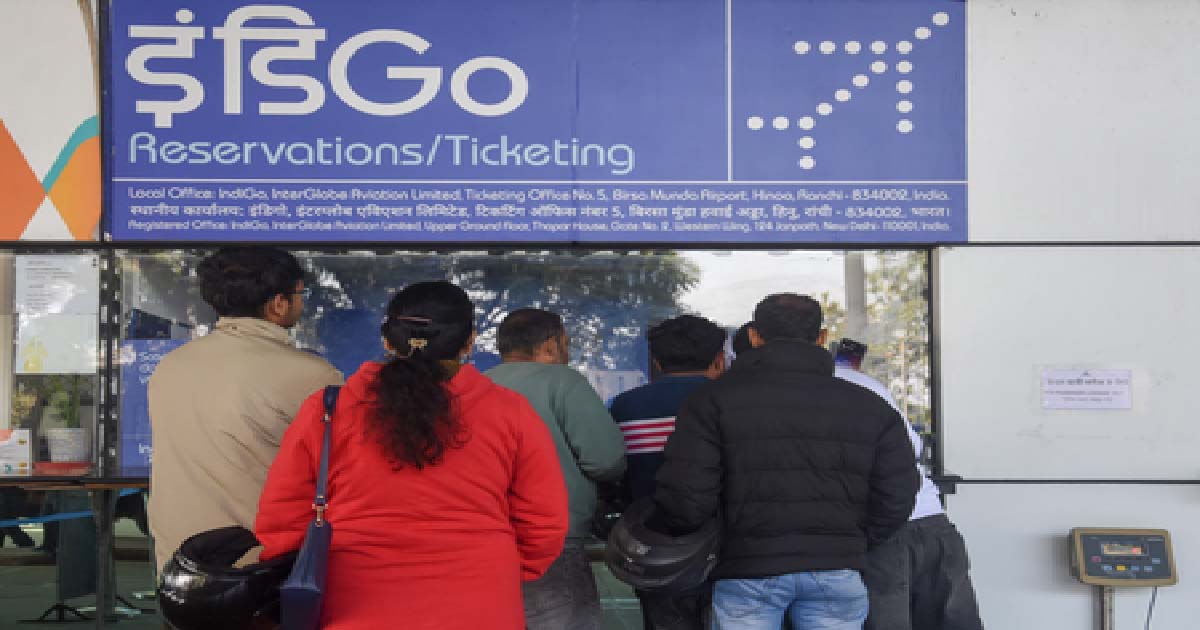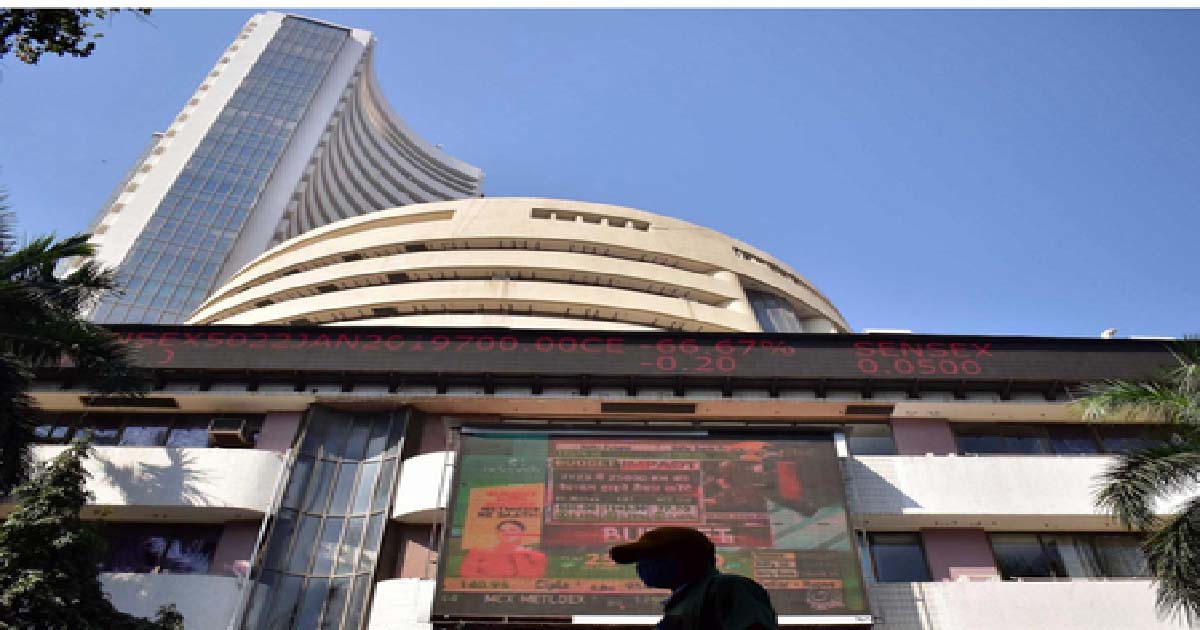Business
Indian stainless steel sector drowning in Chinese imports
The first half of 2021-22 has seen a 185 per cent increase in stainless steel imports compared to the average monthly imports in the last fiscal, creating havoc for the Indian players.
The import tide of stainless steel from China and Indonesia is fast turning into a deluge destroying many companies on its way, and threatening the very existence of the small, medium and micro industries in India. After all, the first half of 2021-22 witnessed a staggering 185% increase in import volumes of stainless steel flat products compared to the average monthly imports in the last fiscal, fuelled mostly by surge in Chinese and Indonesian imports.
The two countries China and Indonesia, which increased their exports by 300 per cent and 339 per cent, respectively, in the first half of this fiscal compared to the average monthly imports of the last fiscal, now have a share of 79 per cent of the total stainless steel flat product imports in the first half of FY22. It is a significant jump compared to the 44 per cent share in FY21. The average per month imports has jumped from 34,105 tonnes per month in FY21 to 63,154 tonnes per month this current fiscal–FY 22.
Indonesia’s imports share, which was virtually non-existent in 2016-17, has climbed to 23 per cent in the first half of this fiscal, with its average monthly exports increasing from 4,355 tonnes/month in the last fiscal to 14,766 tonnes/month in the first half of this fiscal. China’s average monthly exports too has jumped from 10,697 tonnes/month in the last fiscal to 35,269 tonnes/month in the first half of this fiscal.
The surge in imports was the result of the Finance Ministry’s decision of September 30, 2021 to revoke the imposition of CVD on China (September 2017) and end provisional duties on Indonesia (October 2020), which was based on the recommendations of the Director-General of Trade Remedies (DGTR), after a detailed investigation. The investigation had revealed that the two countries were resorting to non-WTO compliant subsidies to boost their exports to India and causing injury to Indian manufacturers.
In fact, the DGTR and their global counterparts had conclusively proved in its final finding that both these countries provide non-WTO compliant subsidies to the tune of 20 per cent to 30 per cent to their stainless steel manufacturers. And, these subsidies have created an imbalance in the Indian and international markets, reduced the competitiveness of Indian products in the domestic industry, causing material injury and persistent financial stress for home-grown businesses. It has forced the domestic industry to seek redressal from the surge in imports.
In fact, in India a disaggregated study of imported products in the first half of the current fiscal also reveals how excessive dumping has taken place in a particular J3 grade of stainless steel in the country. Imports of J3, a subsidised and dumped 200 series grade of stainless steel, with about 1 per cent nickel and 13 per cent chromium from China, has jumped from an average of 1,779 tonnes/month in 2019 to an average of 4,425 tonnes/month in 20-21 (249 per cent increase) and to average 25,346 tonnes to in just six months of 2021-22 (1,424 per cent) increase compared to the same period last year.
The share of this grade in total imports from China increased 23 per cent in 2019-20 to 72 per cent in 2021-22. Much of this import is even below the scrap prices and it hurts the MSME sector, the hardest. Such dumping also means major losses in terms of national exchequer through tax evasion and revenue losses.
This onslaught of Chinese exports to India has decimated the micro, small and medium enterprises (MSME), which had to bear the brunt of the impact. In fact, the imposition of provisional CVD on Indonesia in October 2020 and CVD on China in place from September 2017, had provided a “level-playing field” to these players, which got a much-needed relief from the dumped subsidised imports. The MSME, an industry having the capacity to produce about 1.2 lakh tonnes of hot and cold-rolled flat products, was able to operate at 90 per cent plus capacity utilization between October 2020 to February 2021.
However, the MSME sector suddenly finds itself grasping for breath to survive after the announcements of the 2021-22 Budget. Small-scale stainless- steel rollers and re-rollers, who make ingots from recyclable scrap as the first step in stainless- steel product manufacturing, and then produce hot and cold rolled materials for the all-India market, find themselves swamped by a massive and subsidised surge of imports from China and Indonesia.
Today, more than 80 induction furnaces and 500 patti/patta units, which provides primary raw materials for various downstream industries, are in dire straits. These downstream industries manufacture a variety of stainless steel household goods such as kitchenware, tableware, cooking range, sanitary items, cutlery pots, etc.
Prakash Jain, President, All India Stainless Steel Cold Roller Association, says: “The smaller Indian stainless steel players finds it virtually impossible to compete with the state-subsidised Chinese players, who get an 18 per cent incentive to export, under invoice their products by changing the label of the products to avoid paying duties and sell it at Rs 15 to Rs 17 per tonne cheaper in the Indian market.”
According to Jain, Gujarat has 70 rolling mills, each employing around 300 people and 50 induction furnaces, which makes ingots, the raw material for rolling mills and employs 500 each.
Not only will many of these jobs be lost resulting in massive unemployment but force many manufacturers to turn traders unless the CVD is imposed on imports from China and Indonesia.
Business
IndiGo disruptions may cause revenue loss, penalties to company: Report

New Delhi, Dec 8: Widespread flight disruptions at IndiGo are credit negative, and refunds and compensation could cause it “significant financial damage”, credit rating agency Moody’s warned on Monday.
In a note, Moody’s said that regulatory penalties from the Directorate General of Civil Aviation (DGCA) remain possible as the airline failed to plan for aviation rules communicated over a year earlier.
The crisis struck as the airlines entered their peak winter schedule, with “significant lapses in planning, oversight and resource management” as the Phase 2 of the Flight Duty Time Limitation (FDTL) rules were introduced on November 1, 2025, after being communicated more than a year earlier, it noted.
The rules reclassified midnight–6 a.m. duties as night duty and cut permissible landings in 24 hours from six to two or three. The agency said that IndiGo’s lean operating model lacked resilience to integrate the change, forcing a system‑wide schedule reset.
Over 1,600 flights were cancelled on December 5, and over 1,200 were grounded in November, with cancellations beginning on December 2. Moody’s said IndiGo is yet to fully restore normal operations.
IndiGo said it was set to operate over 1,800 flights on Monday, up from 1,650 on Sunday, adding that more than 4,500 bags have been delivered to respective customers, and “we are on track to deliver the rest in the next 36 hours”.
The airline said it expects a return to full schedules by mid-December, adding that it is working “round the clock” to normalise operations.
It has so far refunded Rs 827 crore to affected passengers, and the rest is under process for cancellations up to December 15.
Union Civil Aviation Minister K. Rammohan Naidu said in the Parliament on Monday that the government has initiated a thorough inquiry into the matter.
“IndiGo was supposed to manage the crew and roster…We will take strict action. We will set an example for every airline. If there is any non-compliance, we will take action,” he said on the floor of the Rajya Sabha.
Business
IndiGo Crisis Day 7: Mumbai Feels The Heat As Week-Long Flight Issues Deepen Nationwide; 32 Cancellations Reported Today

Mumbai: air travel schedule remained heavily disrupted on Monday as IndiGo’s nationwide operational meltdown stretched into its seventh straight day, causing widespread cancellations across major Indian airports. While the crisis has affected passengers throughout the country, Mumbai, one of IndiGo’s busiest hubs, continued to witness major cancellations that derailed travel plans from early morning.
By 7 am, Mumbai’s Chhatrapati Shivaji Maharaj International Airport had recorded 32 IndiGo cancellations, 10 arrivals and 22 departures, impacting key routes to Chandigarh, Nagpur, Bengaluru, Hyderabad, Goa, Darbhanga, Kolkata and Bhubaneswar. Airport officials said the ripple effect of the disruptions was expected to continue through the day, adding to the nationwide tally of 309 flights impacted by Monday morning.
Across India, more than 224 cancellations were pre-planned and communicated to passengers, officials confirmed, as the airline attempted to manage the crisis strategically. IndiGo had reportedly begun processing 100 per cent refunds for passengers booked up to December 6, even as fresh cancellations continued to pile up.
Delhi’s Indira Gandhi International Airport reported the highest number of disruptions, with 134 IndiGo flights cancelled, 75 departures and 59 arrivals, making it the epicentre of the crisis. In response, the airport issued a public advisory urging passengers to check real-time flight status before heading out. Authorities said they were coordinating with airline teams to minimise chaos inside terminals.
Bengaluru’s Kempegowda International Airport confirmed 127 cancellations, 65 arrivals and 62 departures. Officials said the next status update would be provided later in the evening. Hyderabad’s Rajiv Gandhi International Airport recorded 77 disruptions, splitting between 38 arrivals and 39 departures.
At Srinagar Airport, 16 flights (8 arrivals and 8 departures) were cancelled, while Ahmedabad reported 18 cancellations by 8 am. Passenger crowds were also reported at terminals in Chennai, Jaipur and Mumbai, where many travellers waited for updates amid confusion.
Amid the escalating crisis, aviation regulator DGCA granted IndiGo CEO Pieter Elbers and COO Isidro Porqueras a one-time extension until 6 pm Monday to respond to the show-cause notice issued on December 6. The airline sought extra time citing “operational constraints linked to the scale of nationwide disruptions.” The DGCA, however, warned that no further extension will be granted, and said it would proceed ex parte if the reply is not submitted on time.
Business
Sensex, Nifty open lower amid lack of domestic triggers

Mumbai, Dec 8: Indian stock markets started the week on a weak note on Monday as benchmark indices opened lower in the absence of strong domestic cues.
The Sensex slipped by 93 points, or 0.11 per cent, to trade around 85,619. The Nifty also drifted lower and was seen at 26,137, down 50 points or 0.19 per cent.
Analysts said that Nifty is expected to trade within a defined range today, with near-term resistance placed around 26,300-26,350, where profit-booking may emerge.
“On the downside, support is seen around 26,000-26,050, a zone that has held firm through recent consolidation,” experts said.
Several heavyweight stocks dragged the indices in early trade. Shares of Bajaj Finance, BEL, NTPC, Asian Paints, Power Grid, Trent, Sun Pharma, and ICICI Bank were among the biggest losers on the Sensex.
At the same time, some major technology and auto names helped limit the downside. Eternal, Tech Mahindra, TCS, Tata Motors PV, Infosys, HCL Tech and Tata Steel were the top gainers.
The broader market also showed signs of pressure. The Nifty MidCap index slipped 0.12 per cent, while the Nifty SmallCap index fell more sharply, declining 0.40 per cent.
Sector-wise, real estate, public sector banks, and pharmaceutical stocks were under the most selling pressure, with the Nifty Realty, PSU Bank, and Pharma indices falling between 0.3 per cent and 0.5 per cent.
On the other hand, the Nifty IT index managed to rise 0.5 per cent, supported by gains in large tech stocks. The Nifty Metal index also inched up by 0.2 per cent.
Analysts said that the market mood remained cautious in early trading as investors awaited fresh triggers to set the direction for the day.
“Given the prevailing conditions, a buy-on-dips strategy remains appropriate. Traders may consider adding long positions if Nifty pulls back toward 26,000-26,050 or if Bank Nifty finds stability above 59,400,” market watchers added.
-

 Crime3 years ago
Crime3 years agoClass 10 student jumps to death in Jaipur
-

 Maharashtra1 year ago
Maharashtra1 year agoMumbai Local Train Update: Central Railway’s New Timetable Comes Into Effect; Check Full List Of Revised Timings & Stations
-

 Maharashtra1 year ago
Maharashtra1 year agoMumbai To Go Toll-Free Tonight! Maharashtra Govt Announces Complete Toll Waiver For Light Motor Vehicles At All 5 Entry Points Of City
-

 Maharashtra1 year ago
Maharashtra1 year agoFalse photo of Imtiaz Jaleel’s rally, exposing the fooling conspiracy
-

 National News1 year ago
National News1 year agoMinistry of Railways rolls out Special Drive 4.0 with focus on digitisation, cleanliness, inclusiveness and grievance redressal
-

 Maharashtra1 year ago
Maharashtra1 year agoMaharashtra Elections 2024: Mumbai Metro & BEST Services Extended Till Midnight On Voting Day
-

 National News1 year ago
National News1 year agoJ&K: 4 Jawans Killed, 28 Injured After Bus Carrying BSF Personnel For Poll Duty Falls Into Gorge In Budgam; Terrifying Visuals Surface
-

 Crime1 year ago
Crime1 year agoBaba Siddique Murder: Mumbai Police Unable To Get Lawrence Bishnoi Custody Due To Home Ministry Order, Says Report












